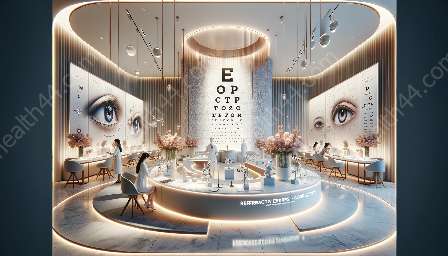Corneal Reshaping Techniques
Corneal reshaping techniques, also known as orthokeratology or ortho-K, are non-surgical procedures that temporarily reshape the cornea to correct refractive errors. These techniques play a vital role in vision care, offering alternative options for individuals seeking to reduce dependency on glasses or contact lenses.
Understanding Refractive Errors and Correction
Refractive errors, such as myopia (nearsightedness), hyperopia (farsightedness), and astigmatism, occur when the cornea and lens do not focus light properly onto the retina, leading to blurred vision. Traditional methods for correcting refractive errors include eyeglasses, contact lenses, and refractive surgery such as LASIK. However, corneal reshaping techniques provide a unique approach to address refractive errors without the need for invasive surgery or reliance on corrective eyewear.
Types of Corneal Reshaping Techniques
There are several corneal reshaping techniques available, each designed to provide customized vision correction:
- Rigid Gas Permeable (RGP) Lenses: These specialized contact lenses gently reshape the cornea during extended nighttime wear, allowing for clearer vision during the day without the need for corrective lenses.
- Soft Multifocal Contact Lenses: These lenses are designed to be worn overnight and are particularly effective for individuals with mild to moderate myopia, providing clear vision throughout the day.
- Scleral Lenses: These larger, gas permeable lenses vault over the cornea and rest on the sclera, providing vision correction for a wide range of refractive errors, including irregular astigmatism.
The Importance of Corneal Reshaping in Vision Care
Corneal reshaping techniques offer numerous benefits for individuals with refractive errors:
- Reduced Dependence on Corrective Eyewear: By temporarily reshaping the cornea, these techniques can significantly reduce or eliminate the need for eyeglasses or contact lenses during the day, providing greater convenience and freedom.
- Non-surgical Alternative: Unlike traditional refractive surgeries, such as LASIK, corneal reshaping techniques offer a non-invasive method to achieve clear vision without permanent alteration to the cornea.
- Control of Myopia Progression: Some corneal reshaping techniques have shown promise in slowing the progression of myopia in children, making them an important option for managing this common refractive error.
Conclusion
In conclusion, corneal reshaping techniques offer a compelling alternative for individuals seeking vision correction without the use of surgical interventions or permanent alteration to the cornea. These techniques are compatible with a wide range of refractive errors and play a critical role in the broader field of vision care, providing individuals with greater freedom and convenience in managing their visual acuity.
As technology continues to advance, corneal reshaping techniques are likely to become an increasingly attractive option for individuals looking to enhance their vision without the constraints of traditional corrective eyewear.


